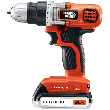Organizing Research Papers
Written by Lee Wyatt (last updated June 18, 2020)
Organizing research papers isn't as difficult of a prospect as many people would make it out to be. Rather, all you need to do is follow a few guidelines, do a little bit of work, and show some imagination. While this article cannot provide the imagination or the work, it does provide the guidelines that you can use to properly organize research papers. By following these guidelines you will be well on the way to a successful research paper, that only requires a some work on your part.
- What is the purpose of the paper? Before you actually begin working on organizing your research paper, you need to determine what the paper is for. Is the paper designed to analyze a certain event in history, or a specific problem? Perhaps you are supposed to defend a specific position, as you would in a debate.
- Create an outline. Create an outline of general steps that you should take for your paper. This outline should include things like steps, dates, deadlines, and other items that may be required for your paper. Basically, this could be viewed as a schedule of everything that your teacher will require for your paper before you are finished.
- Make a list of keywords. Sit down and make a list of different keywords that relate to your given subject. This is going to be a rather fluid list that will be changing periodically as you work on your paper. Later on, these keywords can serve as the basis for the outline of your research paper.
- Use index cards or a computer. Begin doing the research for your paper. Utilize some method for codifying the research that you find. Traditionally, you would use index cards which would include the name of the books, magazines, or articles that you reference, and the information that you referenced. A more modern method would be to utilize a computer to help arrange and sort your information. Before you decide on a method, check with your teacher to ensure that it is according to the formats that they want.
- Create a secondary outline. Create a preliminary outline of your research paper. While you are doing this, utilize the keywords that you have gathered as your topic headers. When you have completed this, set up an appointment with your professor to ensure that you are on track, and make any adjustments as necessary.
- Work on your paper daily. Set aside time each and every day to work on your research paper. It doesn't matter how long the time period is, as long as you are working on your paper consistent. This will help to ensure that you complete your paper in the time limit allowed. As you work on your paper, make sure that you have someone proofread it, and periodically review it for you. This will help in the long run.
- Find out the format you need to use, and write your final paper. Before you begin writing your "final" draft of your paper, make sure that you know any and all formats that are required by your professor. This can include how large the margins are supposed to be, any footnotes, bibliography, and even the type of paper that you are allowed to use. When you have those in hand, write your paper. Before you have someone check your paper at least two times before you finally turn it in.
Author Bio
Lee Wyatt
Contributor of numerous Tips.Net articles, Lee Wyatt is quickly becoming a regular "Jack of all trades." He is currently an independent contractor specializing in writing and editing. Contact him today for all of your writing and editing needs! Click here to contact. Learn more about Lee...
Fixing a Loose Tile
Fixing a loose tile is an extremely easy home repair job that anyone can do. Many people think that when they get a ...
Discover More
Home Hydroponic Gardening
If you are interested in doing some home gardening, but really don't have a whole lot of space you may want to consider ...
Discover More
Yard Management
Everyone knows that first impressions are important, and nothing makes as much of a first impression as your yard. If you ...
Discover More
Principles of Stress Management
One of the biggest adversaries to an organized life is stress. By understanding the principles of stress management you ...
Discover More
Creating an Organizing System
Just putting things away is not being organized. To be organized you must be able to find whatever it is after putting it ...
Discover More
Hiring a Financial Planner
Are you looking for ways to begin organizing your finances? If so, you may want to consider hiring a financial planner. ...
Discover More

Comments